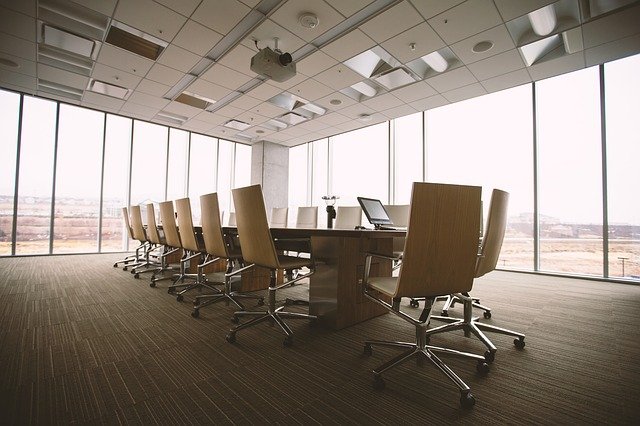Sustainable office design is slowly taking the mainstream these days as it perfectly addresses concerns on climate change. Those who’ve applied this concept in their properties can say that the economic benefits (e.g., cost savings, the longevity of materials) of this trend are undeniable.
Are you looking to follow this trend in your commercial space? If so, read through this post to learn the 7 components of sustainable offices. Then, collaborate with MJMDA interior designers to help you implement these concepts.

1. Air-Tightness
Air-tightness refers to a structure’s resistance to air leakage, be it outward or inward. Air leakage happens at building envelopes, such as access doors and junctions between walls, window frames, and floors. And one of the ways to make an office sustainable is to ensure that building envelopes are air-tight.
Designing an office for air-tightness has been proven to reduce the presence of mould. It also supports the proper functioning of the ventilation system as it’s now more efficient in preventing heat loss.
2. Insulation
Good insulation is the key to making sure the office has an ideal temperature and vibe. Fibreglass, cellulose, natural fibre, and mineral wool are among the commonly used insulation materials for their efficiency. These materials can help retain a comfortable indoor temperature as well as ample protection from fire, impact, and outside noise. To know more about insulation and the associated terms, you can refer this insulation glossary.
You can enjoy hefty savings on your electricity bills if you get insulation right.
3. Sustainable and Green Materials
Building a sustainable office starts with choosing the right materials. Many commercial projects these days use straw bales as an alternative to plaster and concrete because of the material’s insulating ability. Recycled plastic, bamboo, ferrock, and wood are other viable options. Timbercrete, a combination of sawdust and concrete, is another excellent material to use as it can be formed into blocks, pavers, and bricks. Experts from https://
Sustainably-sourced materials are usually light. That means you can save on transportation and labour cost.
4. Green Technologies
The use of technology does not have to make buildings even more resource-intensive. Recent construction tech, such as appliances and equipment with Smart features and motion sensors, could lower a building’s energy use.
Green technologies could help keep the building structure in top shape. All you need to do is contact MJMDA interior designers and other experts to plan the apt technologies to use.
5. Strategic Recycling System
It is also beneficial to have an efficient recycling system for your office. Having a recycle-reuse-reduce system is a great way to avoid too much waste. Plus, up-cycling materials, be it for decorative or functional purposes, means cost savings on your end. Specifically, these are some office recycling initiatives you might like to consider:
- Grey-water and rainwater harvesting
- Paper and office supplies garbage management and up-cycling programs
- Water recycling system for landscaping and irrigation
Conduct training for the tenants and your staff regarding the importance of recycling to maintain your office sustainability. Then, implement an attractive incentive program that will encourage them to follow your green initiatives.
6. Sustainable Energy Sources
Energy-efficiency is a crucial factor that affects the sustainability of a building. Is your office consuming too much energy? Do you know your annual carbon footprint? Or how much do you usually pay for non-renewable energy sources? Work with an expert to help you answer these questions. Then, find ways to opt for renewable energy sources, such as hydroelectricity, biomass, wind, geothermal, and solar, to power up your building.
Using renewable energy sources decreases your carbon footprint. Yes, you might need to invest more money for the initial purchase and installation of renewable power sources. But these technologies can also help you cut cost on your electricity bill in the long run.
7. Energy-Efficient Light and Water Systems
Energy-saving water and lighting systems are also staples in sustainable buildings. Many builders and MJMDA interior designers suggest it is best to use water and lighting features with motion sensors as these pieces can turn on or off automatically when not in use. Take time to look at the energy star ratings of appliances and lighting features before buying them. Use sun pipes and roof lights to let in more natural light and save on your electricity bill.
Yes, building a sustainable office might require you to think outside the box and invest a little bit more for the initial purchase and setup of green technologies, appliances, and systems. But it is a practical move to plan your building construction around these components. Many builders and entrepreneurs can attest to the long-term economic benefits of designing a sustainable office. All you need to do next is to collaborate with professionals to get started with the plan, cost, timeline, and construction.